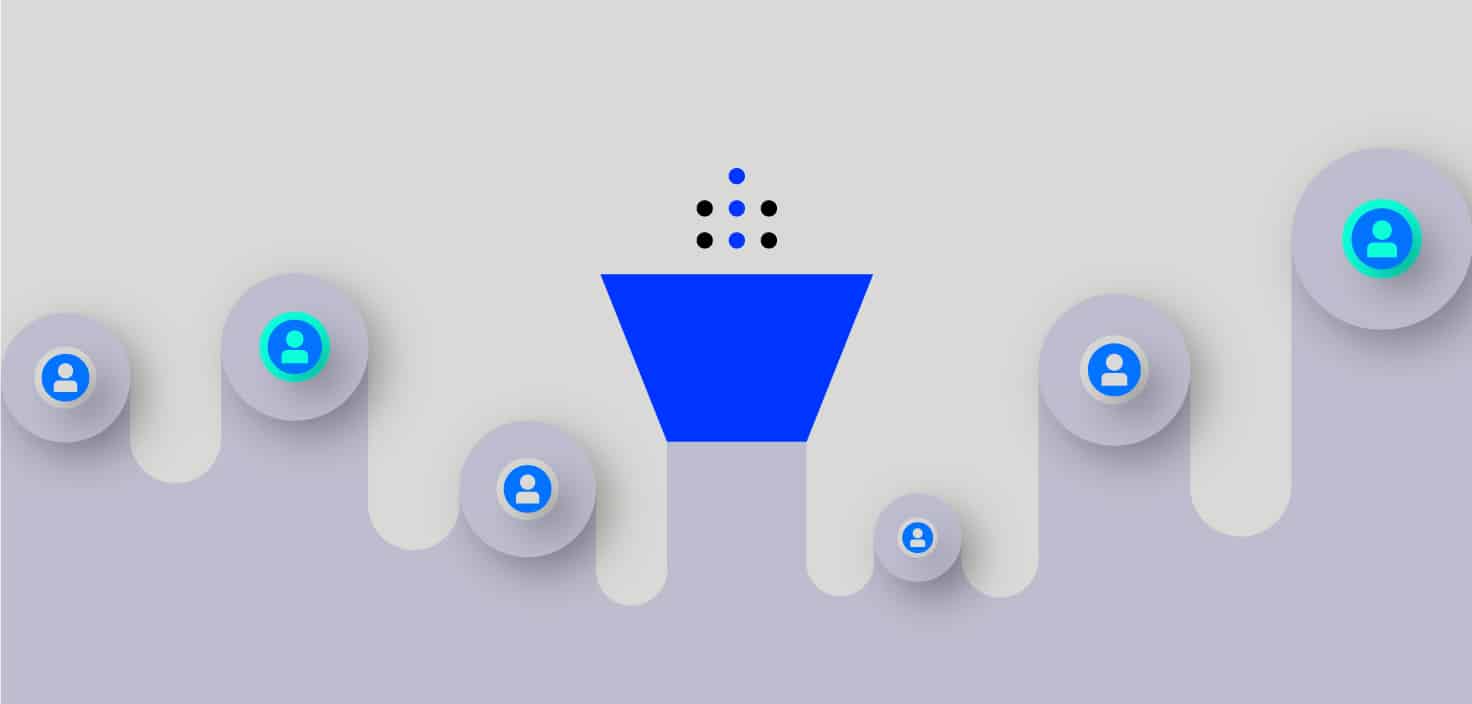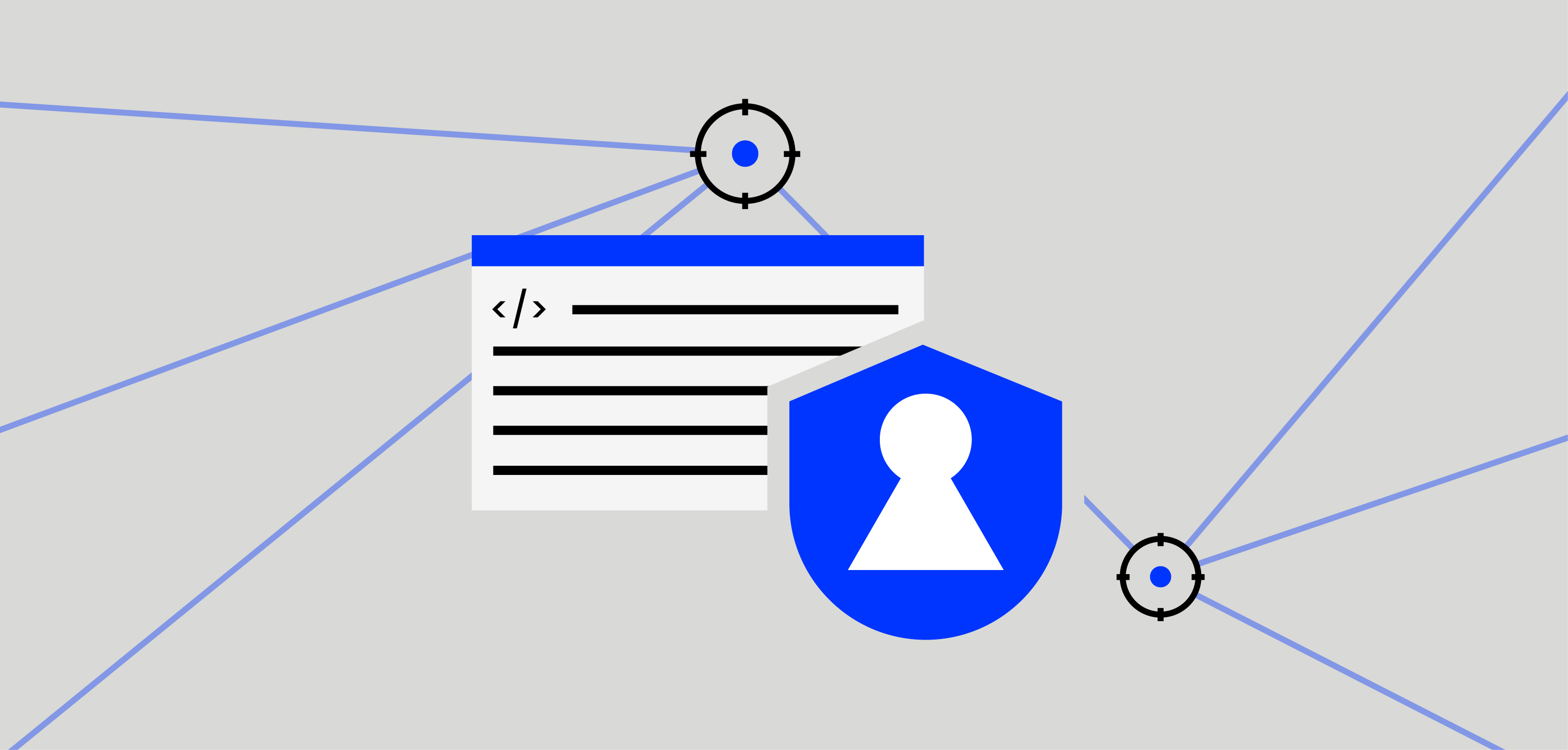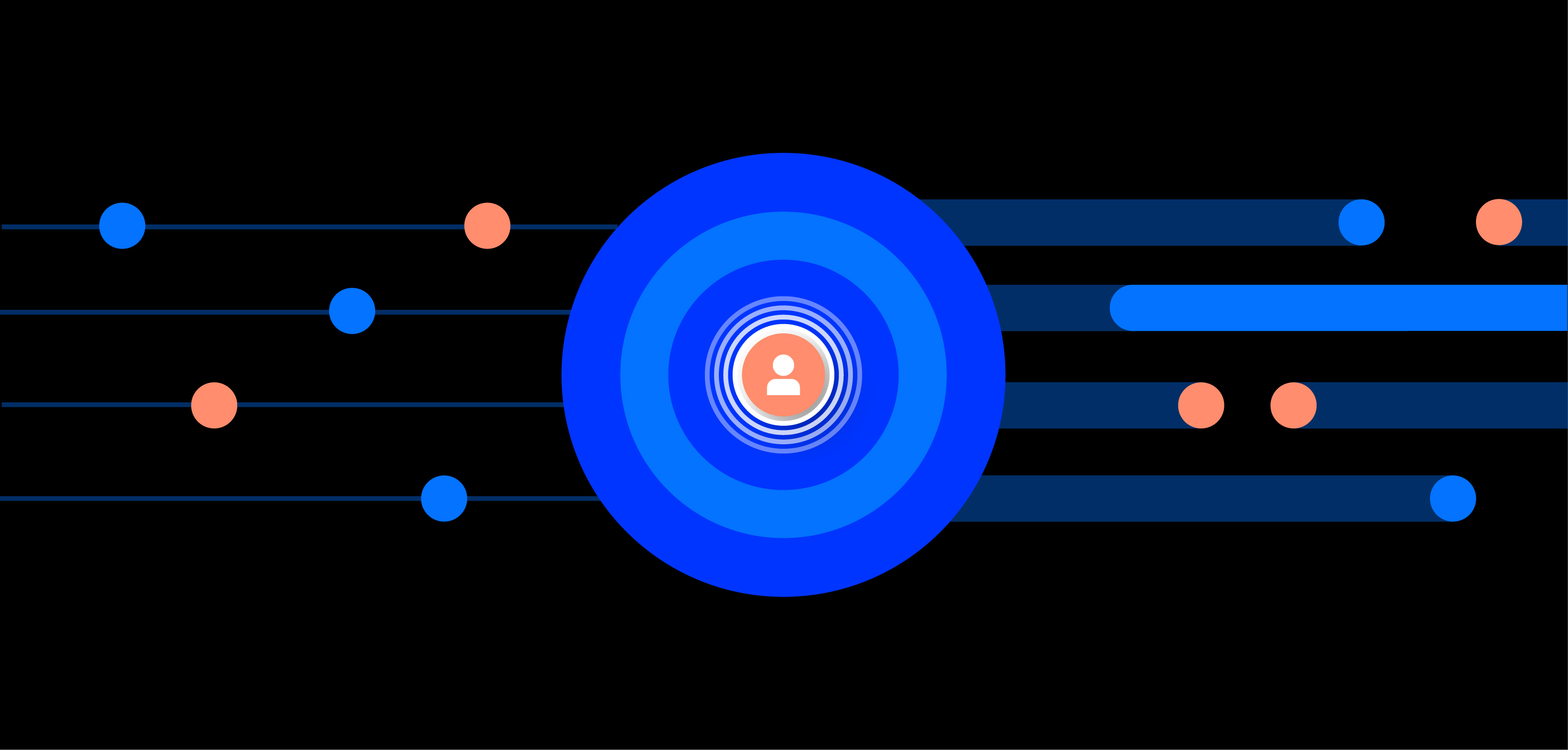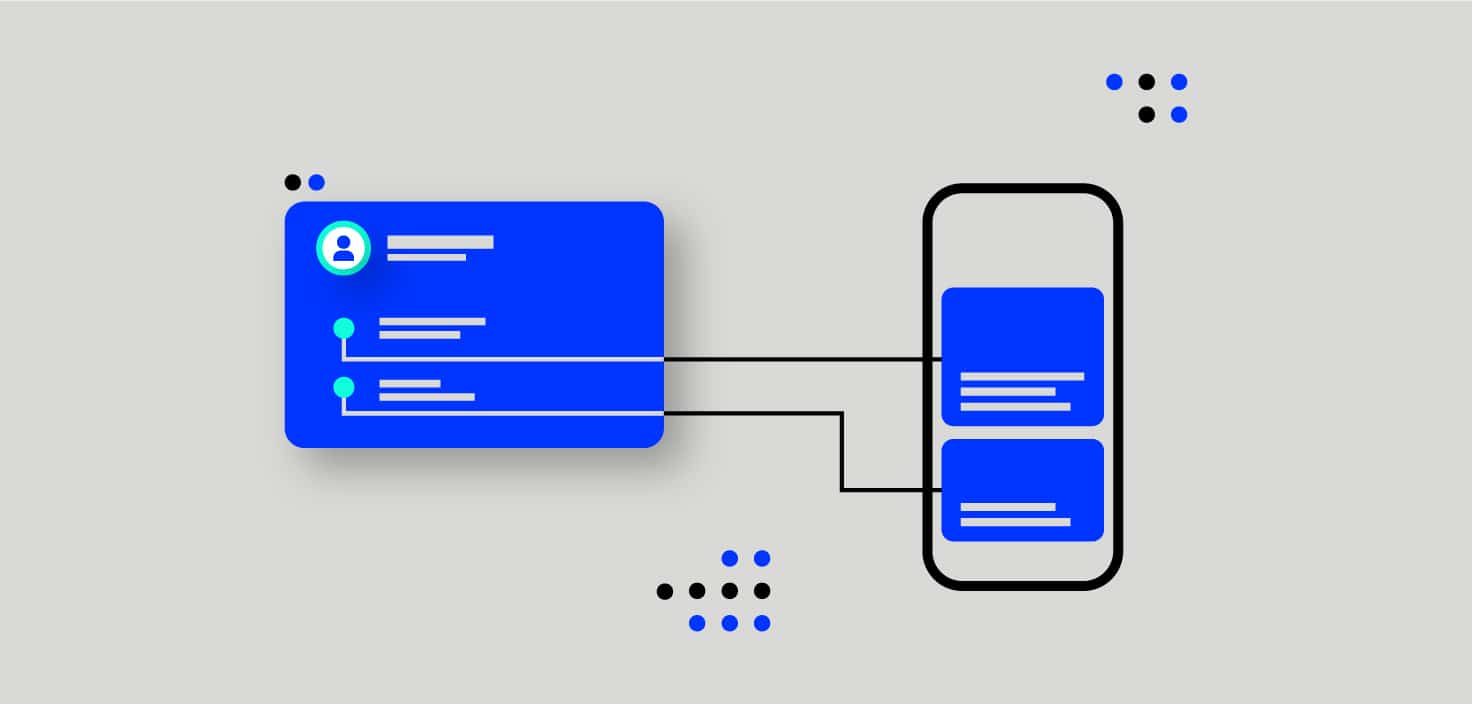Optimizing Your Marketing Funnel: The Ultimate Guide
- Reading Time: 9 minutes
A marketing funnel helps you identify your customers’ journey progress and understand their interactions with your product.
What is a marketing funnel?
At the core, a marketing funnel visualizes the customer journey, guiding potential customers through different stages towards conversion. It is a strategic framework that helps businesses understand the stages of the customer experience, starting from brand awareness to customer conversion.
By mapping the customer journey, the marketing funnel provides valuable insights into customer behavior and patterns, allowing marketers to tailor their efforts and drive results. The marketing funnel serves as the foundation of any marketing strategy, enabling businesses to convert potential customers into loyal brand advocates.

Importance of the marketing funnel in modern marketing strategies
It helps businesses navigate the digital landscape, build brand awareness, and drive targeted marketing efforts. By understanding the customer journey, businesses can effectively allocate resources to different stages of the funnel and optimize their marketing efforts. Whether it’s attracting potential customers, nurturing leads, or driving conversions, the marketing funnel provides a roadmap for success. In today’s competitive market, a well-optimized marketing funnel can make all the difference in achieving marketing goals and driving business growth.
In the State of Inbound Marketing Report published by HubSpot, it is mentioned that companies that optimize their funnels and utilize marketing automation have a 41% higher average customer conversion rate than those who do not.
How the funnel helps identify target audience?
One of the key benefits of the marketing funnel is its ability to help identify the target audience. By narrowing down potential customers based on their behaviors or preferences, the funnel allows businesses to target specific segments with personalized marketing efforts. Businesses start by creating brand awareness and generating interest at the top of the funnel. As it narrows down, they can focus on qualified leads for higher conversion rates.
Analyzing customer behavior and preferences
Analyzing customer behavior and preferences is vital for successful marketing campaigns. The marketing funnel offers insights into customer engagement, helping businesses understand how customers interact at various stages. With digital customer data, businesses can make data-driven choices to improve marketing and the customer journey. To analyze customer behavior, it is first necessary to select a good digital analytics tool. Following that, the data flowing here must be analyzed carefully and strategies must be revised and developed based on the insights gained.
Offering the right product
By leveraging data analysis and machine learning algorithms, businesses can understand customer preferences and behavior patterns. This insight allows them to recommend relevant products to customers at different stages of the marketing funnel, increasing the likelihood of conversion and fostering customer satisfaction.
Sign up to drive your business with the power of data
Understanding the stages of the marketing funnel
Understanding the different stages of the customer’s journey is key to optimizing the marketing funnel. Because you should establish communication according to your customer’s stage. Explaining a new feature to a customer who has never visited your site before can confuse the customer. Let’s take a closer look at each of the funnel stages and see what kind of analysis and communication should be conducted.
Top of the funnel (ToFu) - awareness stage
Building brand awareness, ToFu content marketing leverages social media and search results to target potential customers. Employing awareness stage marketing tactics, it captivates customer interest through specialized landing pages. Incorporating the purchase funnel model, this phase represents the initial stage of the customer journey, emphasizing brand visibility and recognition.
At the awareness stage, businesses can analyze website traffic, page views, and bounce rates. Your digital analytics tool can provide insights into which products or content attract the most attention. During this stage, you can craft eye-catching messages that capture attention and guide visitors even deeper into the funnel.
Middle of the funnel (MoFu) - consideration stage
Consideration content at the middle of the funnel (MoFu) plays a crucial role in educating potential customers. This stage of the marketing funnel focuses on providing valuable insights and information that guide potential customers towards making a purchase decision, optimizing their journey through the purchase funnel.
During consideration, it’s essential to analyze user interactions, such as clicks on product links or downloads of informational resources. Push notifications or in-app messages can be prepared to increase leads by offering educational content, webinars or product demos.
Bottom of the funnel (BoFu) - decision stage
At the bottom of the funnel, potential customers have reached the decision stage, where they are ready to make a purchase decision. Businesses must capitalize on this stage by providing the necessary tools and information to convert potential customers into paying customers.
At the decision stage, businesses need to closely monitor conversion rates, cart abandonment, and product reviews. Marketing tactics at the bottom of the funnel include landing page optimization and push notifications. For example, consider nudging users who browsed a product multiple times but didn’t make a purchase with targeted action-based push notifications. Also, testimonials and case studies also influence and encourage potential customers to convert.
Mapping customer journey through the funnel
Mapping the customer journey through the funnel involves understanding how potential customers interact at different stages. By using digital analytics tools, businesses track interactions, identify touchpoints, and analyze behavior, gaining insights for marketing. This helps create targeted content, tailored campaigns, and improve the overall digital customer experience.
Through user paths, funnel analysis and segmentation of end-user behavior, companies using Dataroid can create which messages they want to send, to whom and when, and flexibly organize the design of these messages.
Measuring success: KPIs and metrics
Measuring the success of marketing funnel efforts involves tracking key performance indicators (KPIs) and analyzing relevant metrics. By utilizing digital analytics and funnel analytics tools, businesses can gain valuable insights into the effectiveness of their marketing campaigns, conversion rates, and customer engagement.
Key KPIs and metrics to track include click-through rates, conversion rates, bounce rates, customer retention, and customer lifetime value. By regularly monitoring these metrics, businesses can make data-driven decisions, identify areas of improvement, and optimize the marketing funnel for maximum results.
Key performance indicators to track funnel effectiveness
By leveraging analytics tools, such as Dataroid, businesses can gather valuable data and insights. Here are some key KPIs to track for funnel effectiveness:
- Conversion rates: Measure the percentage of potential customers who successfully convert into paying customers at each stage of the funnel.
- Click-through rates: Analyze the number of potential customers who engage with marketing campaigns by clicking on links or CTAs.
- Bounce rates: Understand the number of potential customers who leave the website or landing page without taking further action.
- Retention rates: Evaluate the percentage of customers who continue to engage with the brand after conversion, indicating customer satisfaction and loyalty.
By tracking these and other relevant KPIs, businesses can identify areas of improvement, optimize marketing campaigns, and maximize the effectiveness of the marketing funnel.
Utilizing data-driven insights for continuous improvement
Utilizing data-driven insights is essential for marketing funnel improvement. Analyzing customer engagement data reveals preferences, behavior, and purchasing patterns. Here are some ways to leverage data-driven insights for marketing improvement:
- Utilize customer testimonials and feedback to gather insights and improve marketing tactics.
- Conduct competitor research based on analytics data to refine marketing strategies at different stages of the funnel.
- Use analytics tools to derive actionable insights, such as customer engagement patterns, content performance, and conversion rates, to continuously optimize the marketing funnel.
Optimizing the marketing funnel
Businesses can optimize the marketing funnel by continuously analyzing data, monitoring key metrics, and making data-driven decisions. There are various marketing strategies businesses can use to improve conversion rates, target potential customers, and achieve marketing goals, including personalized marketing approaches.
Strategies to improve conversion rates at each stage
Improving conversion rates at each stage of the marketing funnel requires targeted marketing strategies and tactics tailored to the needs of potential customers. Here are some strategies to consider:
- Top of the funnel: Enhance customer acquisition by implementing personalized content marketing to attract potential customers, utilizing lead generation tactics for awareness-stage engagement, and optimizing landing pages to capture their interest.
- Middle of the funnel: To enhance conversion rates, businesses can utilize marketing automation tools for lead nurturing, personalize communication campaigns according to potential customers’ interests, and leverage customer engagement analytics to fine-tune marketing strategies during the consideration stage.
- Bottom of the funnel: During this stage, businesses should focus on using powerful tactics like push notifications, in-app messaging, email marketing, and optimizing conversion-oriented landing pages. Additionally, customer testimonials and case studies can play a pivotal role in influencing potential customers and encouraging them to make the final purchase decision.
Implementing personalized marketing approaches
Personalized marketing is crucial for enhancing the customer experience and driving engagement throughout the marketing funnel. Key considerations include utilizing customer data and segmentation for tailored content, employing marketing automation and digital analytics tools to deliver personalized messages, leveraging customer data for targeted email campaigns, analyzing engagement patterns, and utilizing CRM systems for seamless customer experiences. These strategies help businesses effectively target potential customers and boost conversion rates.
Common challenges in the marketing funnel
The marketing funnel presents several challenges that businesses must overcome to maximize its effectiveness. Some common challenges include maintaining customer retention, addressing funnel drop-offs, and optimizing the customer experience. By identifying and addressing these challenges, businesses can ensure the efficient movement of potential customers through the funnel, increase conversion rates, and boost overall marketing success.
Identifying and overcoming obstacles in the funnel
To enhance conversion rates and create a smooth customer journey, businesses should proactively identify and address obstacles in the marketing funnel. Steps include analyzing funnel analytics, gathering customer feedback, optimizing strategies, re-engaging potential customers, and continuous monitoring for improvements based on customer behavior.
Addressing drop-offs and improving retention
Businesses should improve customer retention and address drop-offs in order to boost marketing funnel effectiveness and ensure long-term success. Among the strategies are loyalty programs, customer engagement analytics, exceptional service, feedback mechanisms, and targeted campaigns.
Future trends of the marketing funnel
The marketing funnel is evolving with the impact of emerging trends. Future trends include AI-driven personalized experiences, omnichannel integration, voice search, heightened focus on customer experience, and advanced analytics.
Emerging technologies impacting the funnel's evolution
Key technologies include AI and machine learning for automation and personalization, AR and VR for immersive experiences, chatbots for real-time engagement, predictive analytics for data-driven insights, and voice search for optimized content. Embracing these technologies helps businesses stay competitive and enhance their marketing funnel performance.
Predictions for the future of customer journey mapping
In the future, customer journey mapping will see increased personalization, integration of various digital channels, heightened focus on the consideration stage, real-time mapping capabilities, and a continuous optimization approach. Embracing these changes allows businesses to adopt customer-centric marketing strategies and enhance customer engagement throughout the journey.
Frequently Asked Questions
What is the difference between the marketing and sales funnel?
The marketing and sales funnels serve different purposes. While the marketing funnel focuses on attracting and engaging potential customers through stages like awareness, interest, consideration, and intent, the sales funnel is about converting those potential customers into paying customers through lead generation, qualification, proposal, and closing.
How to identify where users are dropping?
To determine where users are positioned within the marketing funnel, you can track their analytics, observe their behavior, and identify patterns such as high bounce rates or low click-through rates. Conducting surveys or user feedback sessions can also provide insights into why users exit the funnel at specific points.
How can I understand user behavior?
Understanding user behavior is crucial to optimizing your marketing funnel. Digital analytics tools should be used to monitor user behavior on your digital channels. With these tools, you can analyze user data to identify patterns and trends.
Is loyalty a stage of the marketing funnel?
No, loyalty is not considered a stage in the traditional marketing funnel. The stages typically include awareness, interest, consideration, and conversion. However, post-conversion activities like retention and advocacy are important for building customer loyalty.
Key Takeaways
To summarize, optimizing your marketing funnel is essential for increasing conversions and driving business growth. By understanding the different stages of the funnel and implementing personalized strategies, you can effectively target your audience and guide them through their buyer’s journey. It’s important to measure the success of your marketing funnel by tracking key performance indicators and utilizing data-driven insights to make continuous improvements.
As technology continues to evolve, it’s crucial to stay updated with emerging trends and incorporate them into your funnel strategy. This includes utilizing new technologies and predicting the future of customer journey mapping. We can help you improve your marketing funnel by understanding your customers’ behavior. Contact us today!

YOU MAY ALSO LIKE
Improving Data Security Management: Best Practices for Businesses
Understanding Behavioral Analytics: A Step-by-Step Guide
Customer Churn Analysis: A Comprehensive Guide
How to Use Personalization to Drive In-app Engagement
Funnel Analytics: The Key to Improving Your Conversion Rates
Drive your digital growth
Schedule a demo today to learn more on how we can help you unleash the potential of digital using Dataroid.





